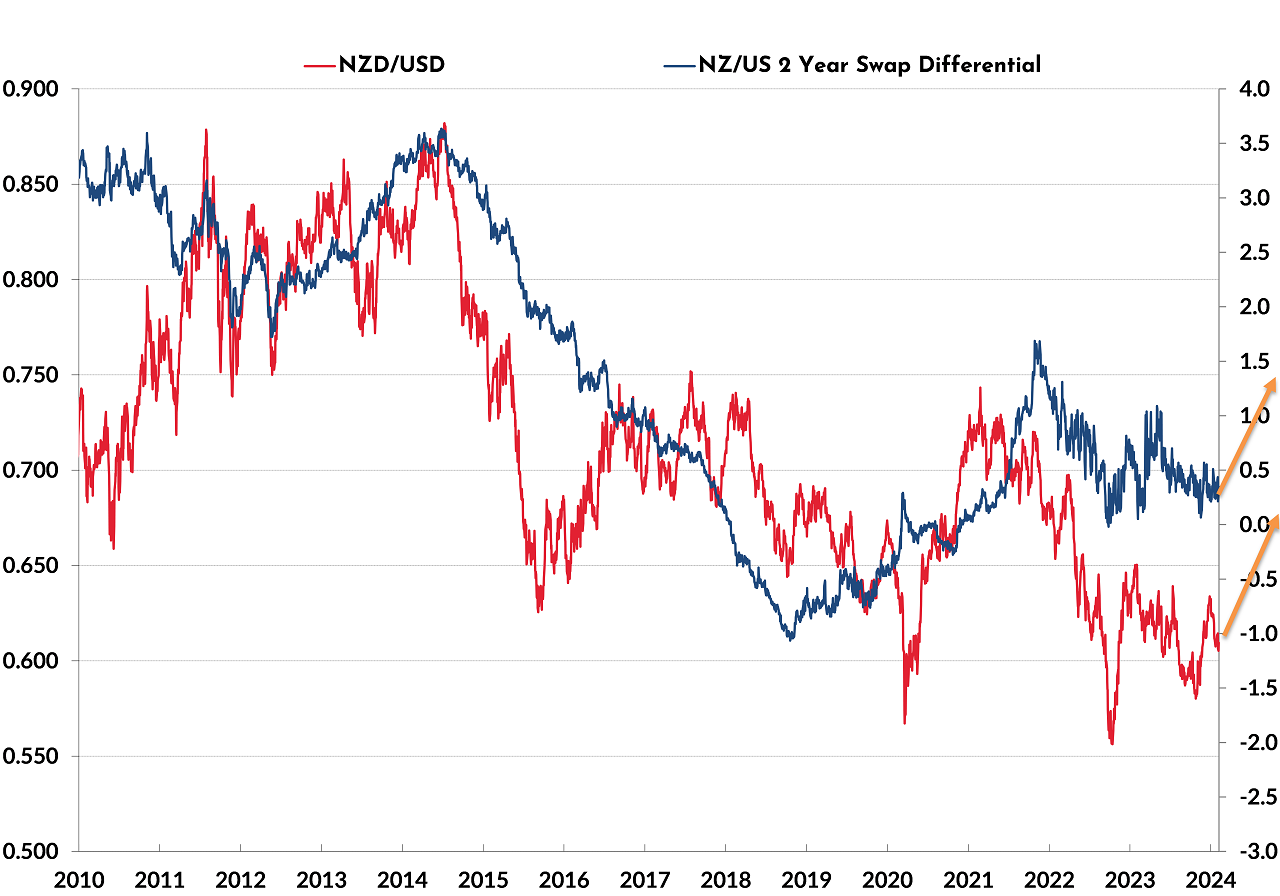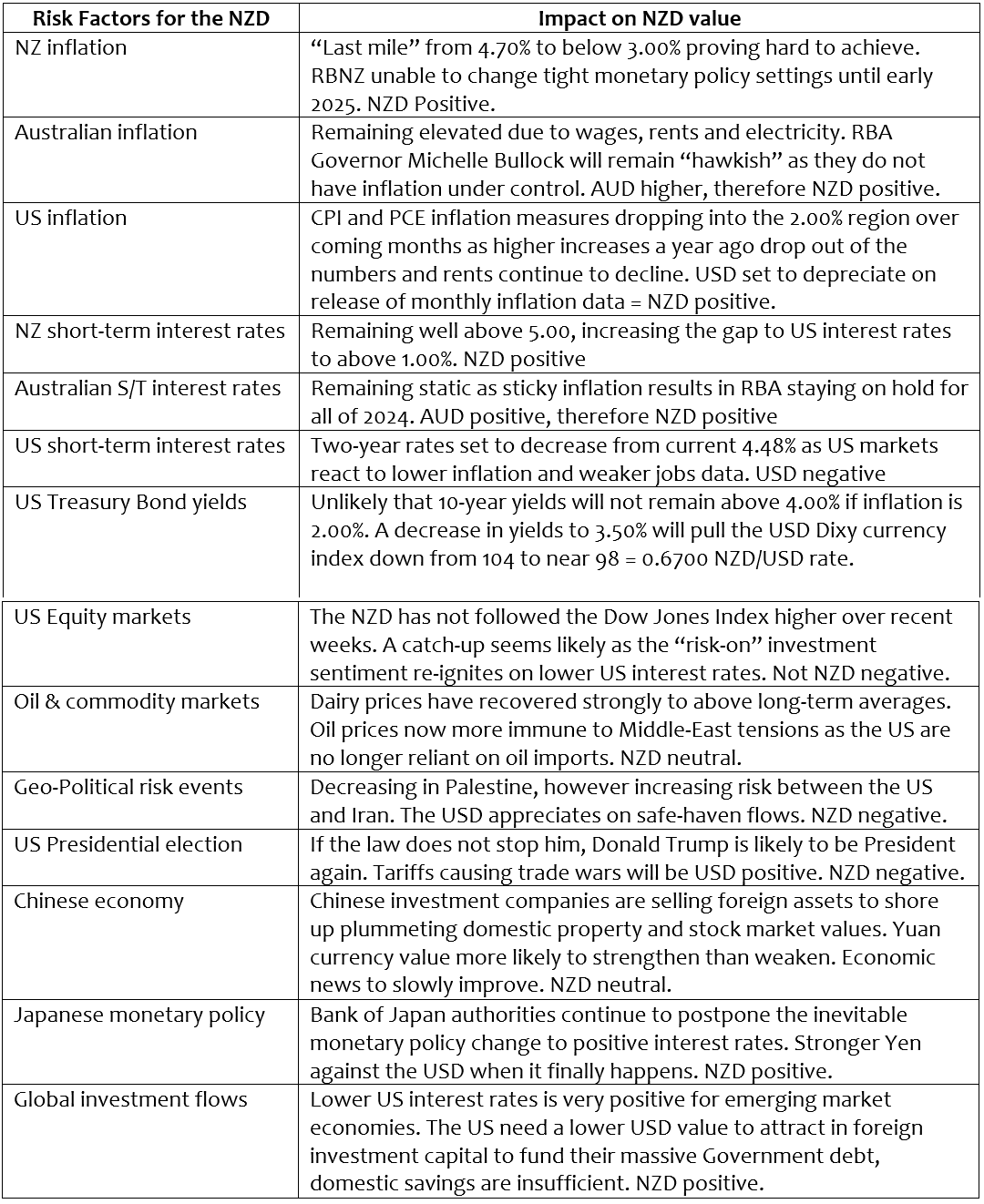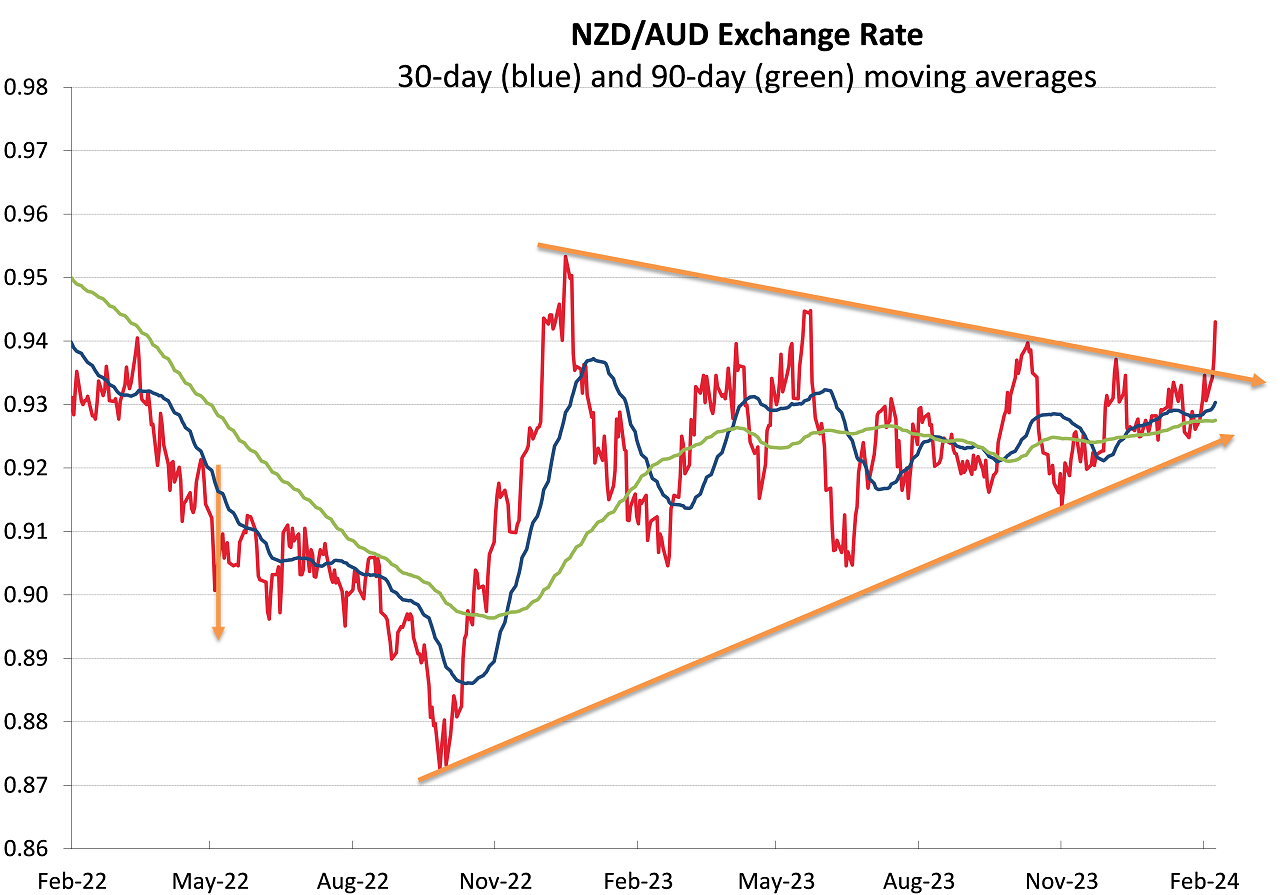
Summary of key points: -
- The US and New Zealand embark on diverging monetary policy paths
- Assigning probabilities from the FX risk grid
- NZD/AUD cross-rate breaks out on the top side
The US and New Zealand embark on diverging monetary policy paths
The aggressive and prolonged tightening of monetary policy by the Reserve Bank of New Zealand (“RBNZ”) over the last 18 months has not been that effective in reducing our inflation rate.
Price setting behaviour in the domestic/supply-side economy has been immune to interest rate changes.
The normal associated NZ dollar appreciation (that reduces import costs and tradable inflation) seen in the past with tight monetary policy/higher interest rates has not occurred on this occasion because the US Federal Reserve has raised interest rates at the same time and to the same extent as New Zealand. The NZD/USD exchange rate decreased through 2022 and 2023 as the US dollar strengthened against all currencies.
The RBNZ, it appears, are now belatedly recognising the difficulty in reducing the sticky/wage-push domestic inflation that has been running close to 4.00% for many years. The have not had the luxury of relying on a higher currency value to reduce tradable inflation to zero or negative, to off-set the permanent non-tradable inflation in the public sector and less competitive parts of the economy. The exchange rate plays a much more important and influential role in monetary policy to control inflation in New Zealand because of our high import penetration levels compared to other economies.
For the last 18 months the US and New Zealand have been on the identical tight monetary policy path to reduce the inflation caused by their respective excessive money printing in the Covid years and the Ukraine/Russian war in early 2022. The difference today is that the US Federal Reserve has been very successful in reducing their inflation from 9.00% at the peak to close to their 2.00% target within the next few months. As a consequence, they will be cutting interest rates at either their 1 May or 12 June FOMC meetings. New Zealand has reduced inflation to 4.70% as food, fuel and freight costs normalise, however housing, healthcare and education components continue to run at 4.00% to 5.00% annual inflation rates and show no signs of abating. The high non-tradable inflation problem, coupled with stronger than expected growth in employment in the December quarter, prompted one local bank to abruptly change their call last week to two further 0.25% OCR hikes to 6.00%. Just a few short weeks ago that same bank was forecasting OCR cuts by July! The RBNZ will probably not have to go that far, however they will be giving clear signals in Governor Orr’s speech this Friday and the MPS on 28th February that interest rate cuts here are unlikely before early 2025 i.e. “higher for longer”.
The now diverging monetary policy paths between the US and NZ over coming months certainly points to a much higher probability of USD weakness and corresponding NZD strength. Over this last week the gap between New Zealand’s two-year swap interest rate (now 5.19%) and the US two-year swap rate (4.49%) has increased from 0.40% to 0.71%. As US interest rates decline over coming months, that gap is forecast to increase to well above 1.00%. The increasing interest rate differential in favour of the NZ dollar (refer to chart below) is a major and powerful factor in exchange rate direction, however many other variables also come into play in assigning probabilities to likely future NZD/USD exchange rate movements (as the following section will address).

Assigning probabilities from the FX risk grid
Determining the level of risk that the NZ dollar appreciates or depreciates from its current 0.6150 level over coming months requires the assignment of probabilities to each of the factors that influence NZD/USD exchange rate movements: -

NZD/AUD cross-rate breaks out on the topside
The jump up in NZ market interest rates last week has widened the gap to static Australian interest rates. The NZD has again out-performed the AUD against the USD, propelling the NZD/AUD cross-rate higher to 0.9430, pushing it out of the topside of the converging wedge chart formation (refer chart below). History is likely to repeat with the spike higher in the NZD/AUD being short-lived.

Daily exchange rates
Select chart tabs
*Roger J Kerr is Executive Chairman of Barrington Treasury Services NZ Limited. He has written commentaries on the NZ dollar since 1981.
4 Comments
"The RBNZ, it appears, are now belatedly recognising the difficulty in reducing the sticky/wage-push domestic inflation that has been running close to 4.00% for many years."
Still waiting for empirical evidence that NZ's 'non-tradable' inflation is primarily caused by wage-push factors.
And while we wait, unsubstantiated convention wisdom - which is a hang-over from the nonsense spread around by business interests that labor unions were responsible for inflation back in the 70s - remains.
And, as it gets regurgitated in every second sentence, people who know no better repeat it thereby ensuring their own lives are subordinated to the interests of 'business'.




We welcome your comments below. If you are not already registered, please register to comment.
Remember we welcome robust, respectful and insightful debate. We don't welcome abusive or defamatory comments and will de-register those repeatedly making such comments. Our current comment policy is here.